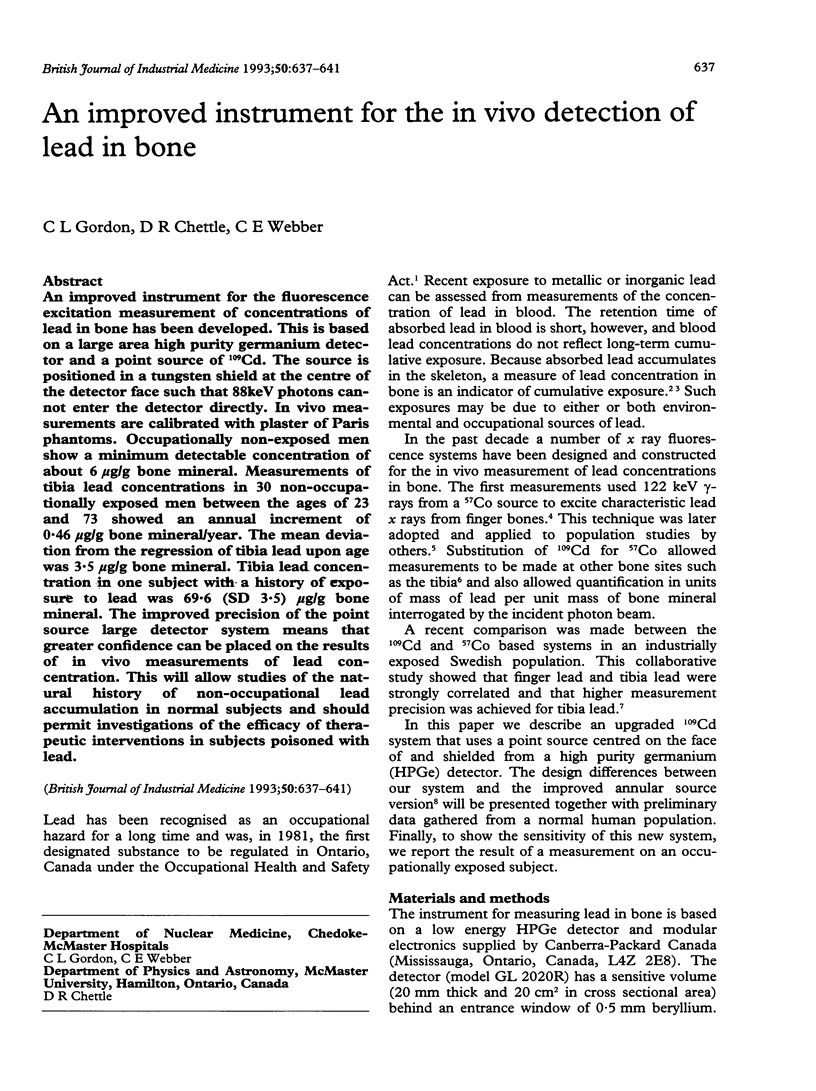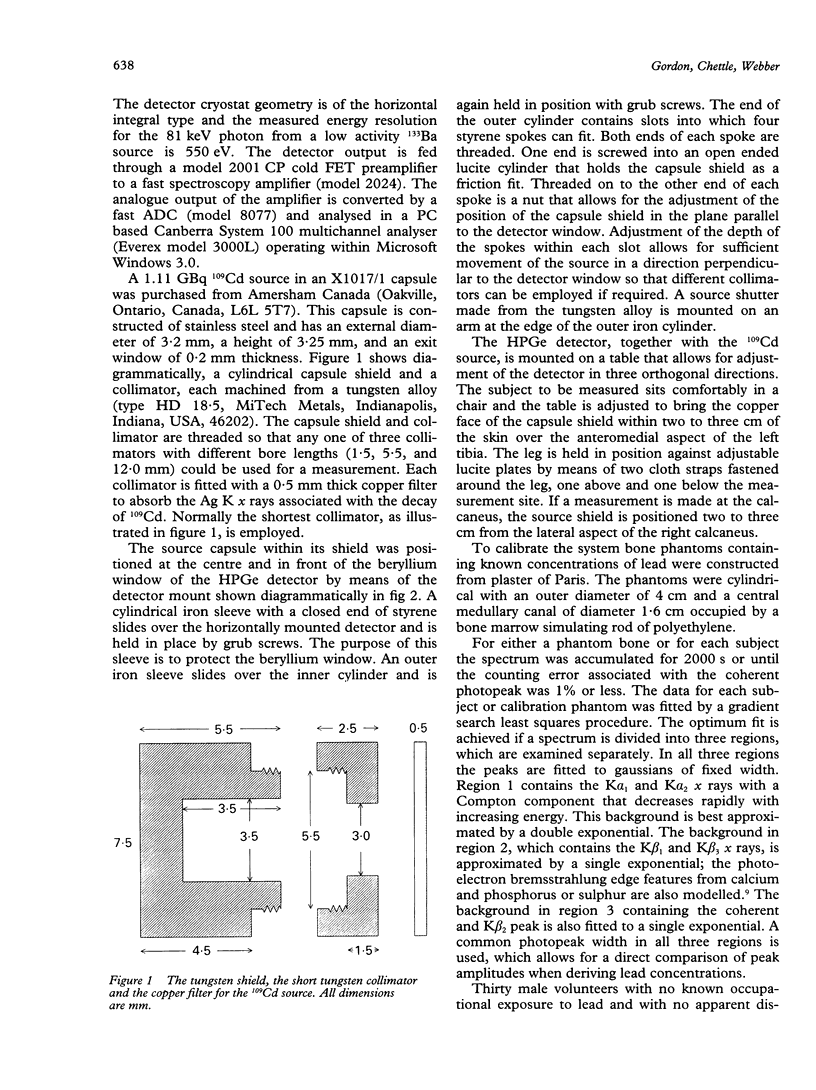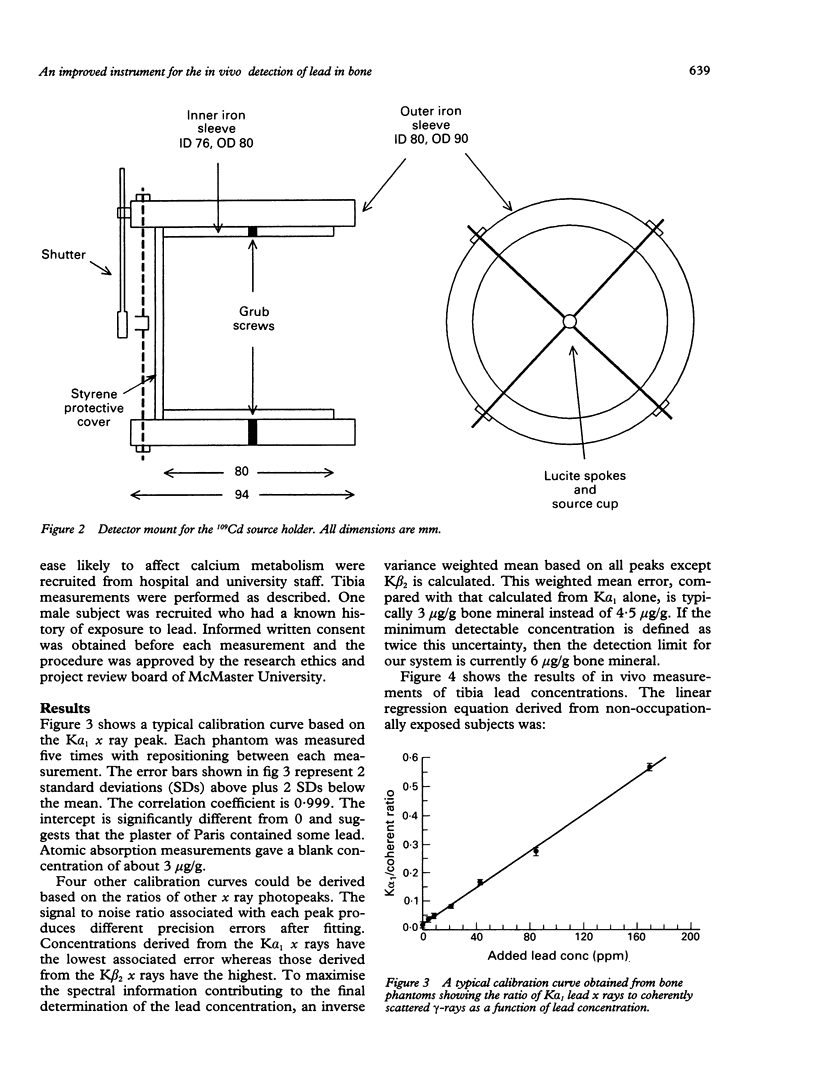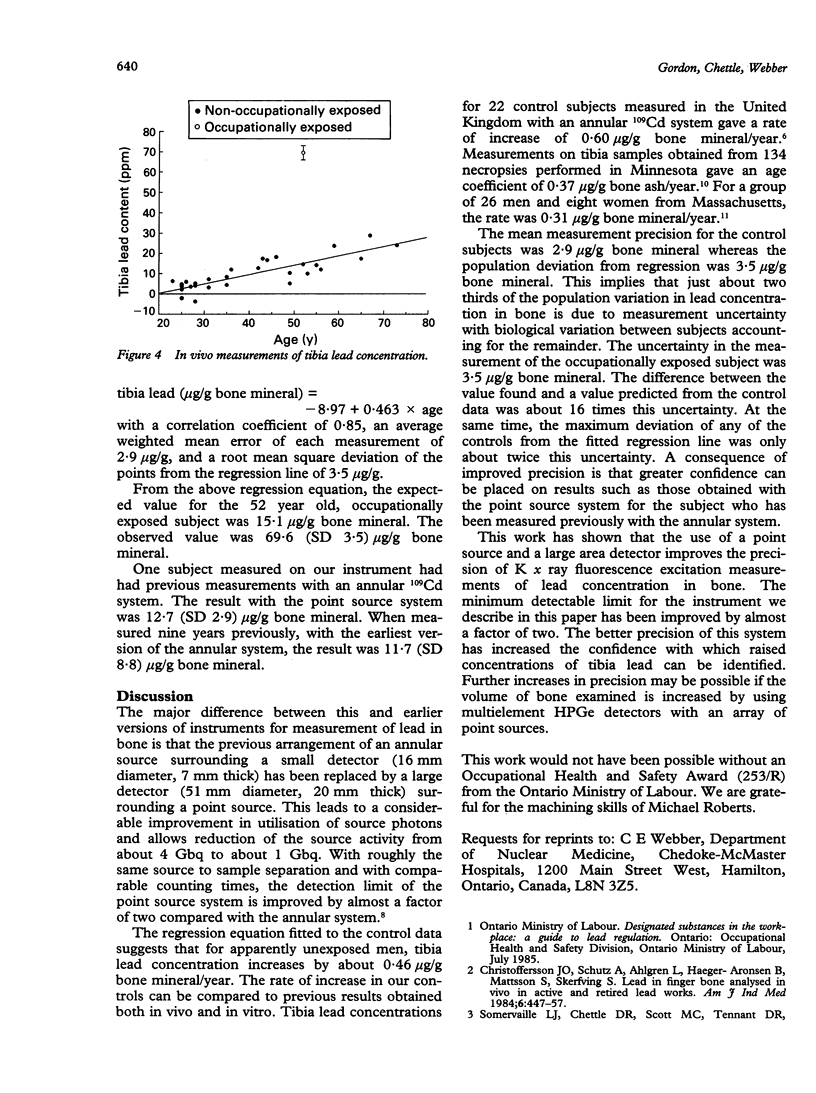Abstract
An improved instrument for the fluorescence excitation measurement of concentrations of lead in bone has been developed. This is based on a large area high purity germanium detector and a point source of 109Cd. The source is positioned in a tungsten shield at the centre of the detector face such that 88keV photons cannot enter the detector directly. In vivo measurements are calibrated with plaster of Paris phantoms. Occupationally non-exposed men show a minimum detectable concentration of about 6 micrograms/g bone mineral. Measurements of tibia lead concentrations in 30 non-occupationally exposed men between the ages of 23 and 73 showed an annual increment of 0.46 microgram/g bone mineral/year. The mean deviation from the regression of tibia lead upon age was 3.5 micrograms/g bone mineral. Tibia lead concentration in one subject with a history of exposure to lead was 69.6 (SD 3.5) micrograms/g bone mineral. The improved precision of the point source large detector system means that greater confidence can be placed on the results of in vivo measurements of lead concentration. This will allow studies of the natural history of non-occupational lead accumulation in normal subjects and should permit investigations of the efficacy of therapeutic interventions in subjects poisoned with lead.
Full text
PDF




Selected References
These references are in PubMed. This may not be the complete list of references from this article.
- Ahlgren L., Mattsson S. An X-ray fluorescence technique for in vivo determination of lead concentration in a bone matrix. Phys Med Biol. 1979 Jan;24(1):136–145. doi: 10.1088/0031-9155/24/1/011. [DOI] [PubMed] [Google Scholar]
- Chettle D. R. Photoelectron bremsstrahlung--analytical possibilities. Phys Med Biol. 1990 Feb;35(2):259–264. doi: 10.1088/0031-9155/35/2/006. [DOI] [PubMed] [Google Scholar]
- Chettle D. R., Scott M. C., Somervaille L. J. Improvements in the precision of in vivo bone lead measurements. Phys Med Biol. 1989 Sep;34(9):1295–1300. doi: 10.1088/0031-9155/34/9/014. [DOI] [PubMed] [Google Scholar]
- Christoffersson J. O., Schütz A., Ahlgren L., Haeger-Aronsen B., Mattsson S., Skerfving S. Lead in finger-bone analysed in vivo in active and retired lead workers. Am J Ind Med. 1984;6(6):447–457. doi: 10.1002/ajim.4700060608. [DOI] [PubMed] [Google Scholar]
- Hu H., Milder F. L., Burger D. E. X-ray fluorescence measurements of lead burden in subjects with low-level community lead exposure. Arch Environ Health. 1990 Nov-Dec;45(6):335–341. doi: 10.1080/00039896.1990.10118752. [DOI] [PubMed] [Google Scholar]
- Price J., Baddeley H., Kenardy J. A., Thomas B. J., Thomas B. W. In vivo X-ray fluorescence estimation of bone lead concentrations in Queensland adults. Br J Radiol. 1984 Jan;57(673):29–33. doi: 10.1259/0007-1285-57-673-29. [DOI] [PubMed] [Google Scholar]
- Somervaille L. J., Chettle D. R., Scott M. C. In vivo measurement of lead in bone using x-ray fluorescence. Phys Med Biol. 1985 Sep;30(9):929–943. doi: 10.1088/0031-9155/30/9/005. [DOI] [PubMed] [Google Scholar]
- Somervaille L. J., Chettle D. R., Scott M. C., Tennant D. R., McKiernan M. J., Skilbeck A., Trethowan W. N. In vivo tibia lead measurements as an index of cumulative exposure in occupationally exposed subjects. Br J Ind Med. 1988 Mar;45(3):174–181. doi: 10.1136/oem.45.3.174. [DOI] [PMC free article] [PubMed] [Google Scholar]
- Somervaille L. J., Nilsson U., Chettle D. R., Tell I., Scott M. C., Schütz A., Mattsson S., Skerfving S. In vivo measurements of bone lead--a comparison of two x-ray fluorescence techniques used at three different bone sites. Phys Med Biol. 1989 Dec;34(12):1833–1845. doi: 10.1088/0031-9155/34/12/007. [DOI] [PubMed] [Google Scholar]
- Wittmers L. E., Jr, Aufderheide A. C., Wallgren J., Rapp G., Jr, Alich A. Lead in bone. IV. Distribution of lead in the human skeleton. Arch Environ Health. 1988 Nov-Dec;43(6):381–391. doi: 10.1080/00039896.1988.9935855. [DOI] [PubMed] [Google Scholar]


